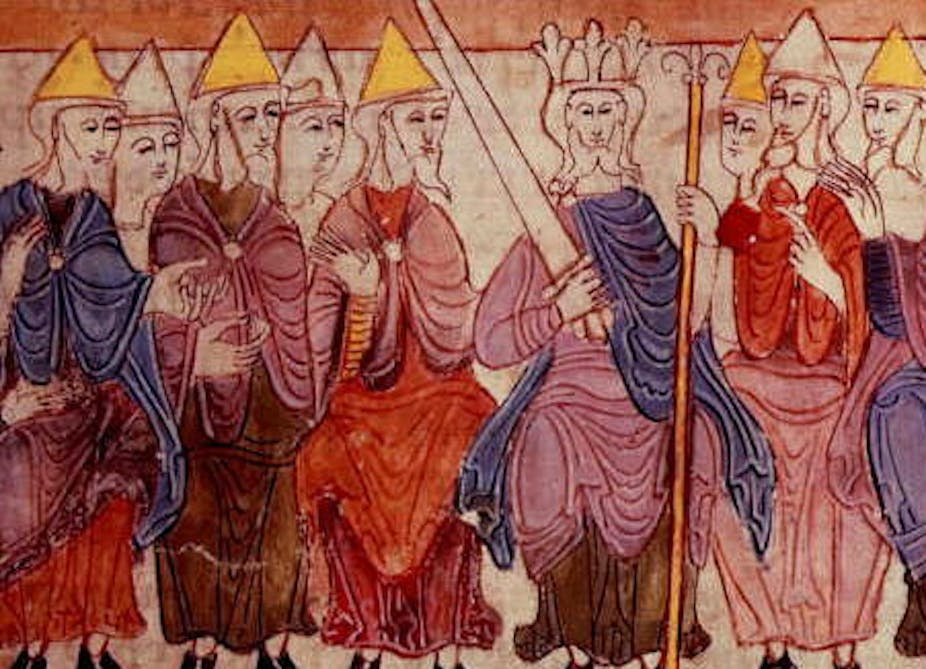Why the idea that the English have a common Anglo-Saxon origin is a mythPosted in Anthropology, Articles, Health/Medicine/Genetics, History, Media Archive, Religion, United Kingdom on 2018-04-12 18:12Z by Steven |
Why the idea that the English have a common Anglo-Saxon origin is a myth
The Conversation
2017-12-15
Duncan Sayer, Reader in Archaeology
University of Central Lancashire
 A diverse history. Witan hexateuch via Wikimedia Commons |
The idea that there is a common Anglo-Saxon ancestry based on biology is gaining currency among some right-wing and religious groups in the UK and US.
In the UK, the new leader of the UK Independence Party, Henry Bolton, suggested in a radio interview in October that “in certain communities the indigenous Anglo-Saxon population is nowhere to be seen.”
In August, a religious group called the Odinist Fellowship wrote to the Church of England demanding two churches as reparations for a “spiritual genocide” which it claims began in the seventh century AD.
The Odinists use old Icelandic texts to reconstruct the “indigenous” religion of the Anglo-Saxons which they claim was oppressed with the arrival of Christianity. The Anglo-Saxons are commonly believed to have migrated into Briton in the fifth and sixth century AD. Iceland by contrast was inhabited in the ninth century by Viking settlers. In the US, this mixed up medievalism is associated with the white supremacist alt-right who use Anglo-Saxon and Viking motifs.
But archaeological research, which examines ancient DNA and artefacts to explore who these “indigenous” Anglo-Saxons were, shows that the people of fifth and sixth century England had a mixed heritage and did not base their identity on a biological legacy. The very idea of the Anglo-Saxon ancestor is a more recent invention linked closely with the English establishment…
Read the entire article here.






